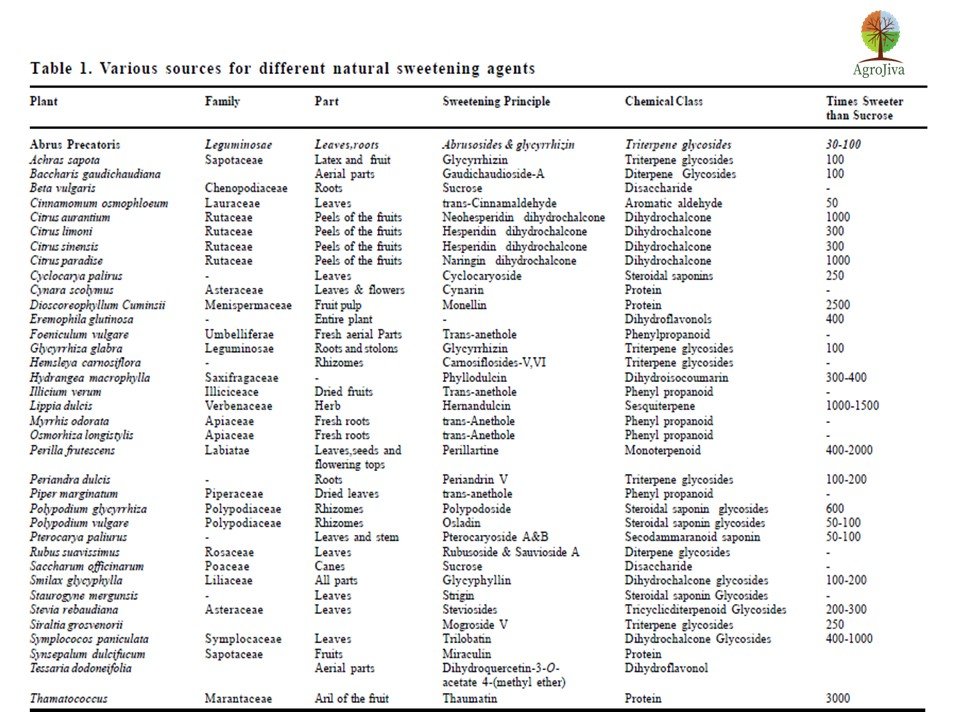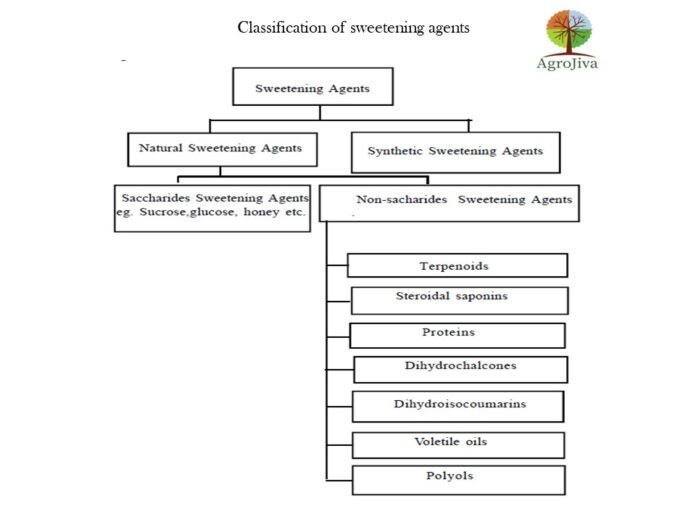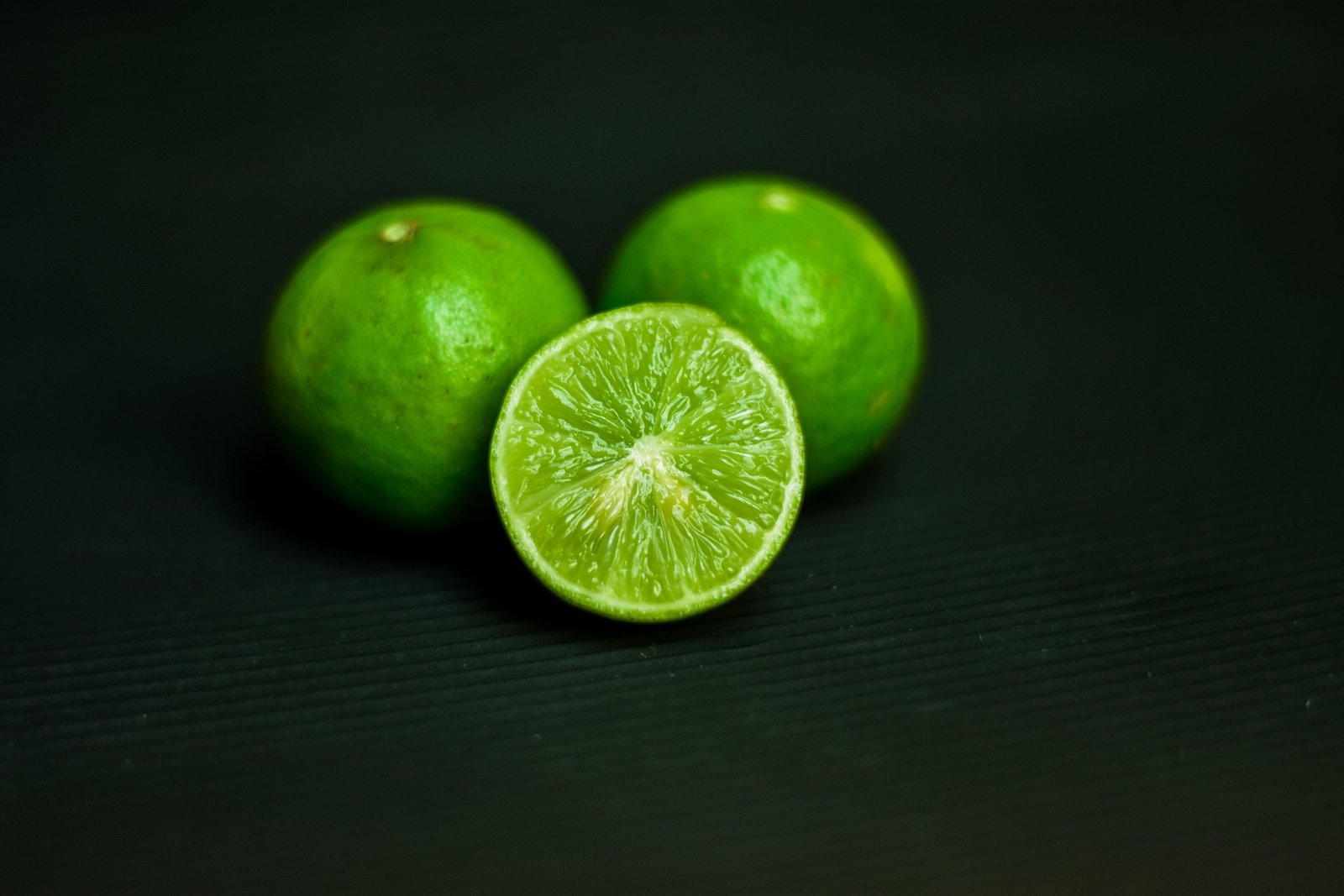Sweetening agents are those which either evoke sweet taste or enhance the perception of sweet taste.
Types of sweeteners:
1)Natural: extracted from natural products or have plant origin. 2)Artificial/synthetic: synthesized using chemical modifications.
•Ideal properties of sweetening agents:
- 1)Be effective even at small concentrations.
- 2)Must be stable at wide range of temperature.
- 3)Should not lead to any diseased situation.
- 4)Should have low or no-colorific value.
- 5)Should be compatible with other ingredients.
- 6)Should not show batch to batch variations.
- 7)Should be readily available and inexpensive.
- Sweetening agents are used to prepare jams, chocolates, sweets, ice-creams, cakes, candies, juices, soft drinks, beverages, chewing gums, and many other food items.


Non-saccharide sweetening agents
•Contain substances other than saccharides as sweet principles. •Contain terpenoids, proteins, dihydrochalcones, steroidal saponins etc. as sweet principles.
•Advantages of non-saccharide sweeteners:
a) Non carcinogenic.
b) Potent sweeteners (many times sweeter than sucrose).
c) Have very low calorific value so useful for diabetic persons.
Terpenoids
•Steviosides: Stevia is the safest natural sweetener. It is obtained from the leaves of Stevia Rebaudiana. It is 300 times sweeter than sucrose.
•Rebiana: It is sweeter and more delicious than stevioside. It provides zero calories and has sweet taste with no undesirable taste characteristics.
•Glycyrrhizin: It is a pentacyclic triterpenoid obtained from roots of the plant Glycyrrhiza glabra. It is widely used as a natural sweetener and flavouring additive. It is also used in the pharmaceutical industry.
•Abrusosides: These are triterpene glycoside present in leaves of plant Abrus precatorius. Leaf extract is commonly used for sweetening foods, beverages, and medicines.
Dihydro Isocoumarins
•Phyllodulcin: It is obtained from plant Hydrangea macrophylla. It is 300-400 times sweeter than sucrose.
Protein sweeteners
•Thaumatin: Sweet protein present in fruits of plant Thaumatococcus danielli. It elicits a sweet taste which is 1000 times sweeter than sucrose depending upon purity and concentration. It is effective in masking bitter taste associated with pharmaceuticals. It also masks off-flavour.
•Miraculin: It is also known as taste modifying protein as it modifies sour taste into a sweet taste. It is present in the red berries of Richardella dulcifica. •Curculin: It is isolated from the plant Curculigo latifolia. It also modifies sour taste into a sweet taste.
•Monellin: Present in red berries of plant Dioscoreophyllum cumminsii. It is 3000 times sweeter than sucrose. It looses its sweetness when heated above 50˚C.
Read More:- Butter:- Common Defects, Causes, and Remedies
Dihydrochalcones
•Glycyphyllin: It is present in almost all parts of the plant Smilax glycyphylla. It is mainly propagated through rhizomes and tuberous roots. It is 100-200 times sweeter than sucrose.
•Trilobatin: It is obtained from the plant Symplococcus paniculata. Commonly known as a sweet leaf. It is 400-1000 times sweeter than sucrose. It also shows antioxidative activity.
Steroidal saponins
•Polypodoside A: It is obtained from plant Polypodium glycyrhizza.
•Osladin: It is obtained from fern Polypodium vulgare. It is 300-3000 times sweeter than sucrose.
•Strogin: Obtained from leaves of Staurogyne mergunsis.
Polyol sweeteners
•Xylitol: It is found in fruits and vegetables. It has many advantages as food ingredient. It improves colour and taste of preparations. It also limits obesity. It provides stable taste for longer duration. It is also used as stabilizing agent.
•Erythritol: It is white crystalline powder that is odourless with sweet taste similar to sucrose. It is used in production of sugar free foods. It has high digestive tolerance, safe for people with diabetes and does not promote tooth decay.
Read More :- Biotechnology and its Application in Dairy Industry
















